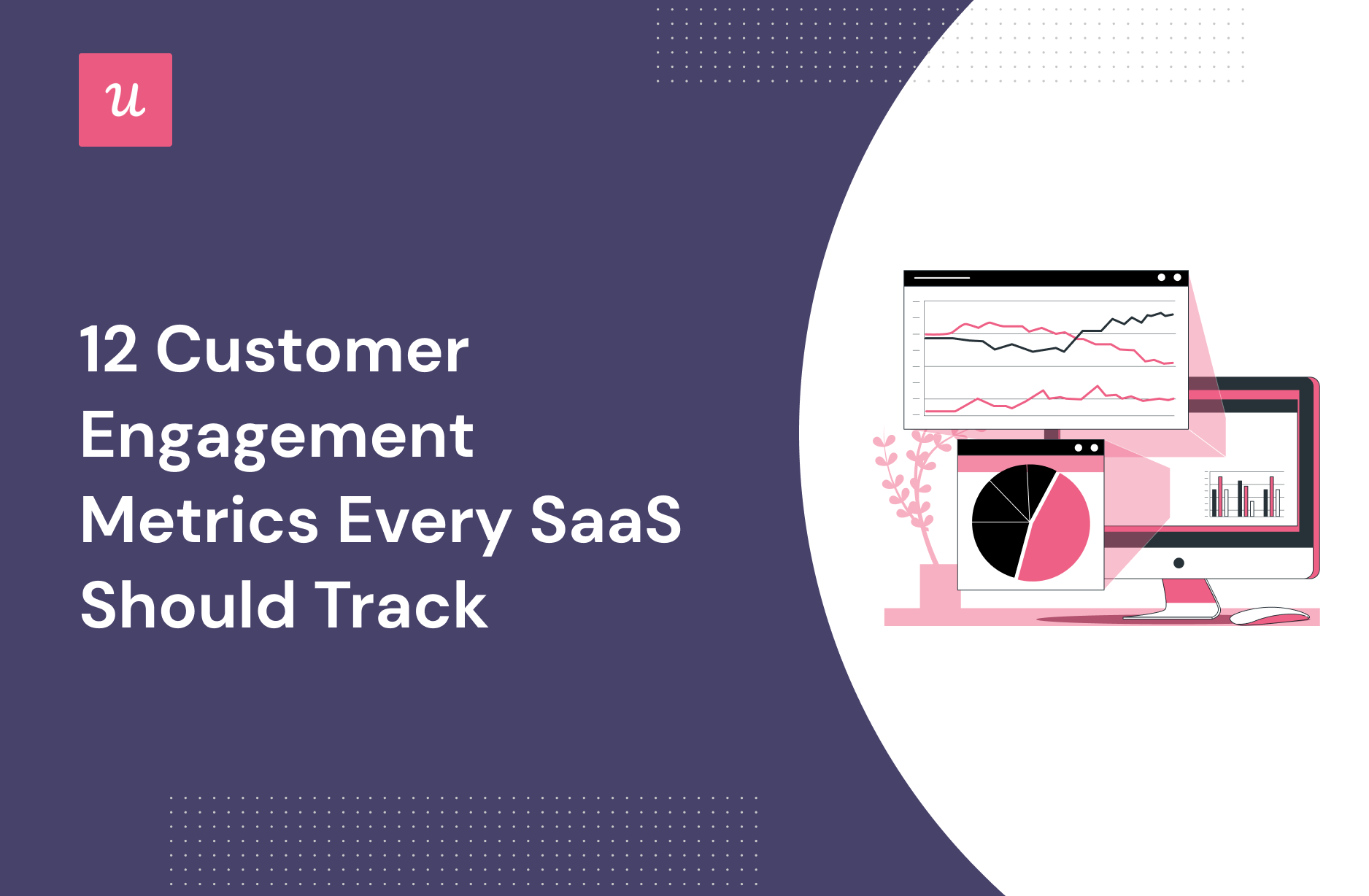
12 Customer Engagement Metrics Every SaaS Should Track To Measure Engagement
Studies have shown that acquiring new customers is 5 – 25 times harder than retaining existing ones. A key reason why customer engagement metrics are important to successful SaaS businesses.
While customer acquisition is important, if you’re unable to keep user engagement up, you’ve built a leaking house that will drown everyone in it!
In this article, we will walk you through twelve important user engagement metrics to measure.
Let’s get started!
Try Userpilot Now
See Why 1,000+ Teams Choose Userpilot

Overview of customer engagement metrics for SaaS
- Customer engagement metrics are how you measure your customers’ interactions with your brand and product across different touchpoints and channels in their journey
- Measure engagement by acquisition channel to optimize your acquisition strategy and focus on the one with the most engaged users.
- Measure engagement by feature usage to understand what brings the most value
- Measure engagement by customer engagement score and personalize engagement experiences
- The most important engagement metrics include
- Conversion rate across the customer journey
- LTV:CAC
- Activation rate
- Feature engagement
- Product adoption rate
- Active users
- Average session duration
- Net promoter score (NPS)
- Customer satisfaction score (CSAT)
- Customer effort score (CES)
- Retention rate
- Churn rate
- Using Userpilot, you can measure customer engagement while gaining actionable insights to improve your engagement metrics. Book a demo to see how!
What are customer engagement metrics?
Customer engagement metrics measure how your customers interact with your brand and product across different touchpoints and channels in their journey.
To drive customer engagement rates, you need a sticky product that keeps users interacting with it. While you may think you’ve built that, monitoring customer engagement metrics gives better insight into how customers feel about your product.
The customer engagement metrics show you the parts of your product or the customer journey stage that is faulty. This is how you know where to focus your attention to improve retention rates.
How do you measure customer engagement?
Now that you know how important customer engagement is to a SaaS product’s success, how do you measure it?
When looking to optimize customer engagement, you need to look at how engaged users are at different points in their journey. There are three different ways of measuring customer engagement:
Measure customer engagement by acquisition channel
This shows which segment or cohort of your different marketing efforts results in the highest engagement rates and best LTV-CAC ratio. By doing this, you’ll know what channels bring you the best users, and be able to optimize your acquisition strategy.
Measure customer engagement by feature usage
Tracking feature usage gives you insight into users’ interactions with the different parts of your product. It helps you understand what your customers value most and guides your product development efforts and in-app onboarding process.
Measure customer engagement with a customer engagement score
This tells you the likelihood of getting specific outcomes (retention or churn) based on customer engagement with your product.
What customer engagement metrics are important to track?
As I mentioned earlier, customer engagement metrics look at the ways customers interact with your product at the different stages of their journey.
To track this, you’ll need to use product usage analytics and look at specific metrics at each stage in the user journey. Most SaaS companies use the pirate metrics framework for this.
Pirate metrics is a system of grouping and tracking metrics across the different stages of the customer funnel. It’s also called the “AAARRR” funnel, an acronym for each stage of the customer’s journey: Acquisition, Activation, Adoption, Retention, Revenue (expansion), and Referral.
Since there are a lot of metrics to track at each stage of the funnel, I’ve picked 12 of the most important ones to go over in this post.
Conversion rate
This gives you an insight into how many of your prospects are turning into leads and how many of those leads are converting from a free trial to becoming paid users.
The conversion rate shows how users are progressing through the customer lifecycle. Here are four important touchpoints to look at:
- Visitor-to-sign-up rate
- Sign-up-to-PQL rate
- PQL-customer rate
- Trials to premium rate

By monitoring your conversion rates, you’ll be able to figure out what parts of the user journey need optimization:
- your acquisition rate is too low?
- are you converting trial users to paying customers at a lower rate than the industry benchmarks?
You can’t be in multiple places simultaneously, optimizing engagement at each stage simultaneously (unless you have a huge product marketing team). Conversion rates will tell you where your funnel is leaking and can determine your product marketing strategy.
LTV to CAC ratio
LTV to CAC ratio measures the revenue generated by each customer against the cost of acquiring them. Are you spending more to get less value or are you spending way less than you should be?
That’s what the LTV to CAC ratio helps you learn.
Customer lifetime value (LTV) tells you how much revenue you get on average from each user. This is calculated by dividing the Average Revenue Per Account by the Customer Churn Rate.

Customer acquisition cost (CAC) shows you how much you spend on marketing efforts to get users into the funnel. CAC is calculated as Total Sales and Marketing Expenses divided by the number of customers acquired.
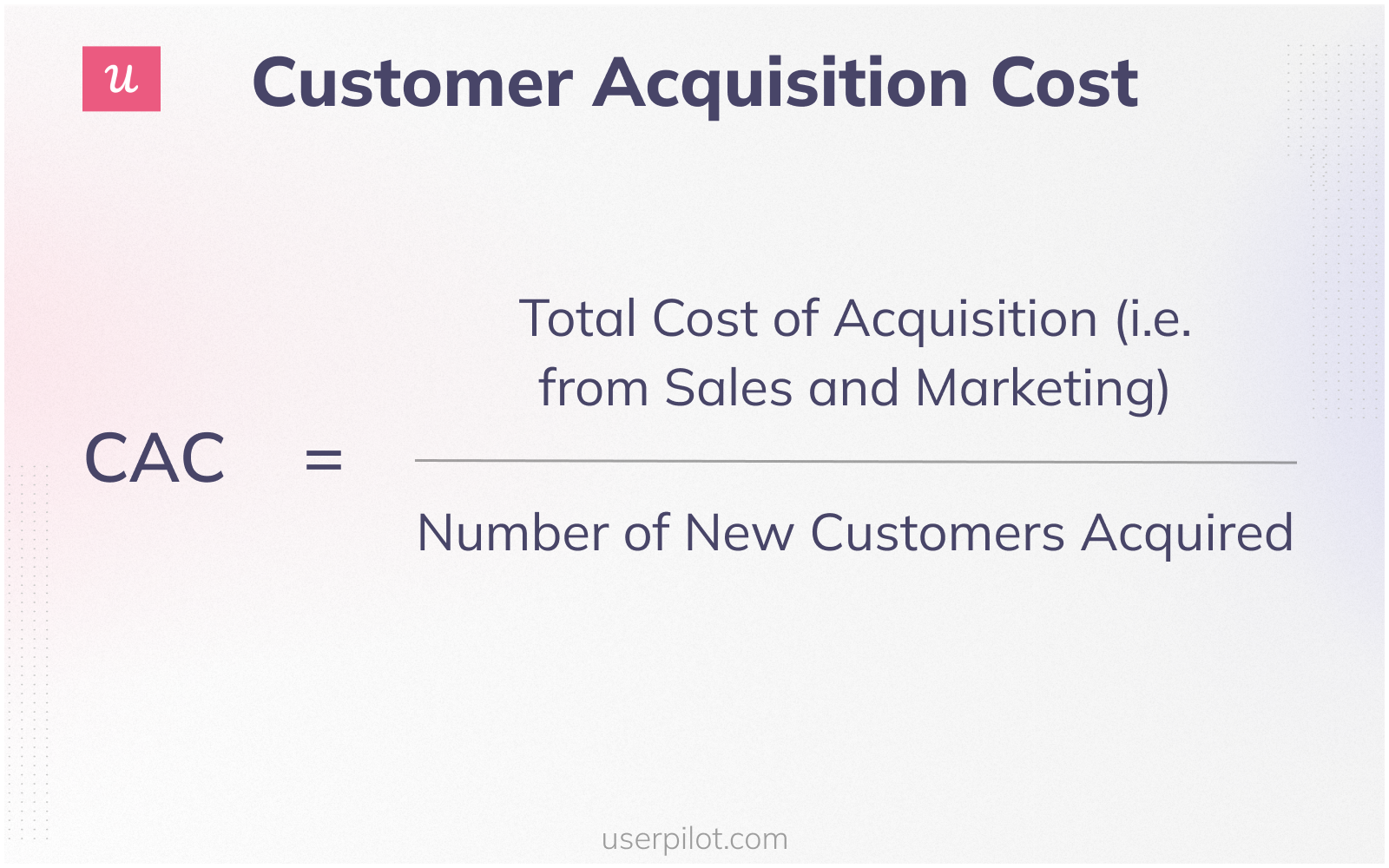
If the ratio between both values is less than 1:1 it means you’re running at a loss. 3:1 is the optimal rate. Anything more than that means you’re not utilizing enough acquisition resources.
To calculate LTV: CAC ratio, all you need to do is divide your LTV figure by the CAC figure.
Activation rate
The activation rate measures user engagement by looking at how many users experience the value your product offers by reaching the activation point in the journey. It shows how many customers are performing key action in your product that drives them to experience the value and get their job done.
Activation rate is calculated as the total number of users who reached the activation stage, divided by the total number of sign-ups, multiplied by 100.
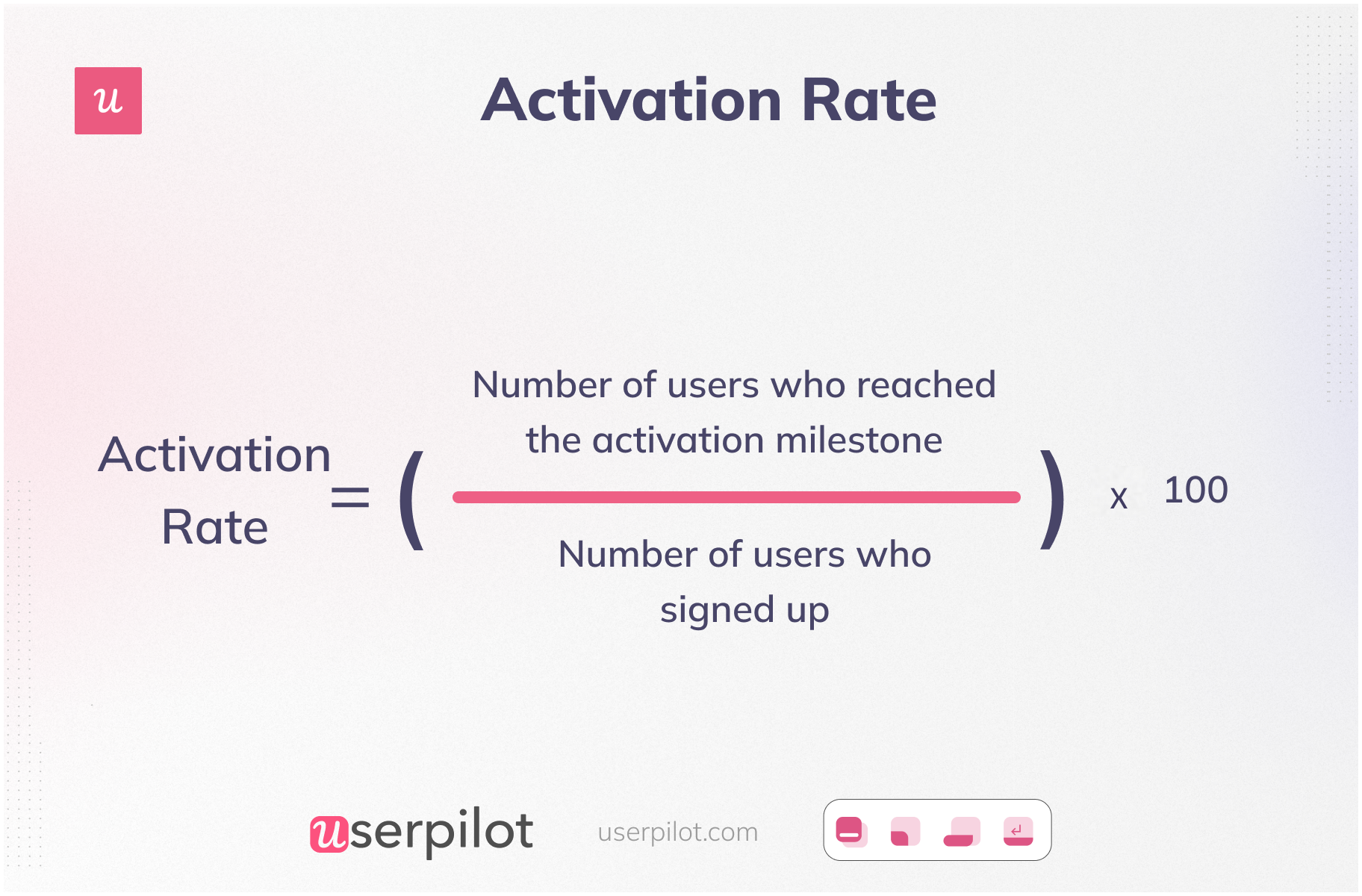
Since SaaS products are different and have multiple user types, activation points differ from one product to another. Monitoring this customer engagement metric will help you understand what key core actions a user needs to take in order to experience value.
Then you can optimize your product to remove friction and drive more engagement towards that.
Feature engagement
Feature engagement measures how customers interact with your product’s features.
It’s important to track primary feature usage both primary (the ones that users engage with first and reach the activation point) and secondary features (more advanced features that deliver extra value).
Because your SaaS product has various features meant for different use cases it’s important to track user actions and the usage frequency for each to be able to understand:
- Which features are useful or not?
- How quickly are users adopting them?
- What features need to be optimized?
- Which features need to be abandoned?
Measuring the feature engagement metric tells you how customers are engaging with your product and adopting it. It also gives you insights into where to focus your product onboarding efforts using in-app marketing to drive feature engagement.
To calculate the feature engagement metric divide the number of a feature’s monthly active users (MAU) by the number of user logins in a given period and multiply by 100.
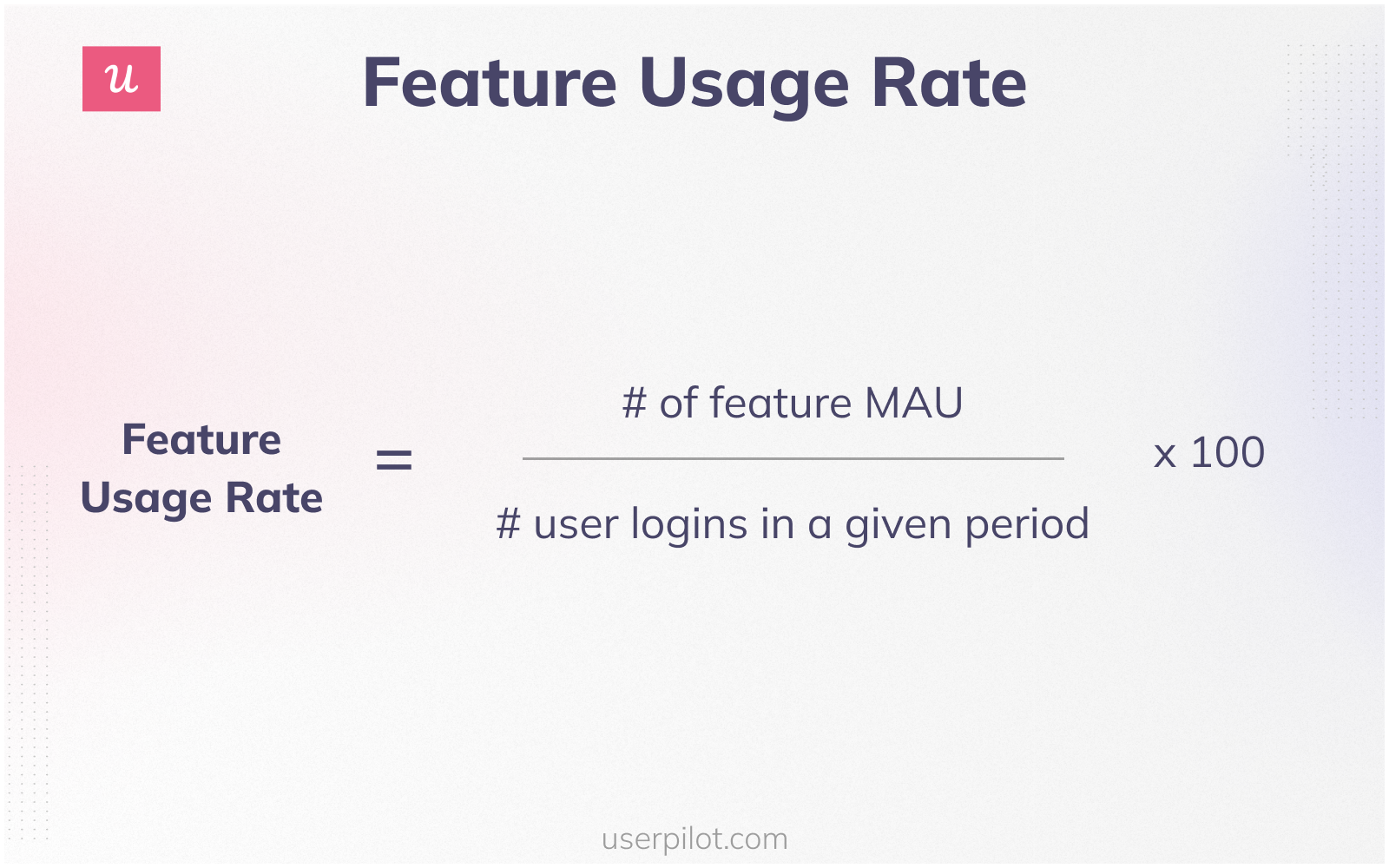
Product adoption rate
Product adoption rate serves as one of the key customer engagement metrics, which directly reflects the success of your customer engagement strategy. It measures the percentage of customers who have actively integrated your product into their workflows.
When customers actively adopt your product, it signifies that they have found value in the offering and see it as a solution to their needs or challenges. A high product adoption rate indicates that you succeed at turning your users into engaged customers and they are deriving value from it.
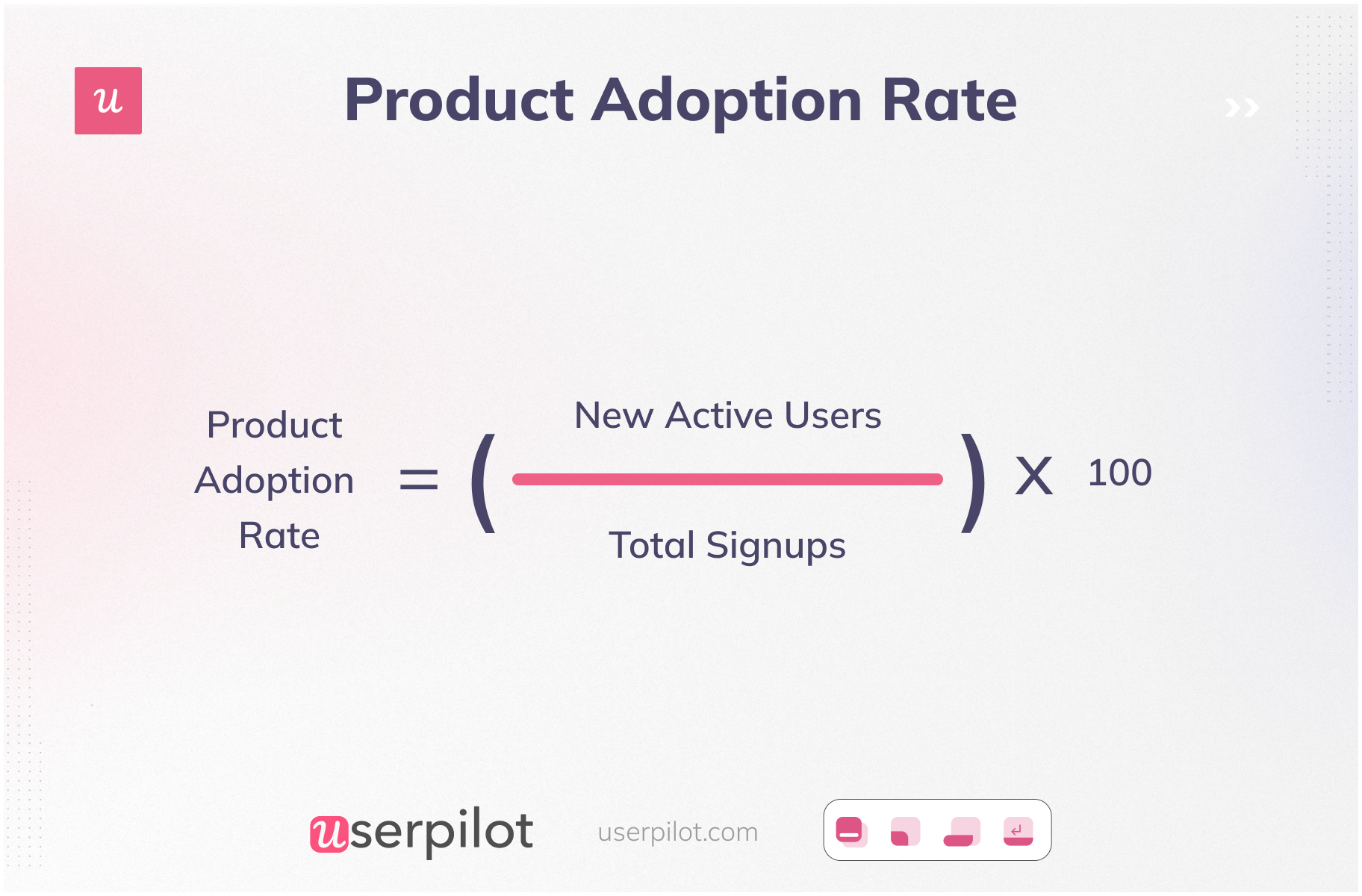
Active users
This particular customer engagement metric reveals how many users actively engage with your product’s key features.
Active users are not the same thing as daily active users, as some SaaS products don’t require users to use the product daily in order for them to be considered engaged.
Therefore, you have to define what features are core to your product’s existence. What are the most important things to be done using your product?
Using Hootsuite, a social media management tool as an example, the key features user should consistently engage with to be considered active users are:
- Connecting their social media pages to the app
- Creating posts
- Scheduling and publishing posts
So when measuring active users, these are the points they’ll look at. Measuring customer engagement by key features shows you how many users are active and engaged by your product at a certain time.
You can track customer engagement by monitoring product usage with a product adoption tool, like Userpilot. This allows you to tag features directly inside your UI and start tracking engagement without having to set up custom events. The best part is, once you are tracking these, you can also use Userpilot to run in-app experiences meant to increase engagement.

Start tracking engagement in your app with Userpilot. Get a Demo and get started with no code needed!
Try Userpilot and Improve Your Customer Engagement!

Average session duration
Average session duration is a valuable customer engagement metric that measures the amount of time customers spend actively interacting with your product during a single session. It provides insights into the level of interest, involvement, and satisfaction customers experience while using the product.
To measure customer engagement effectively, tracking the average session duration is crucial as it helps gauge the depth of customer interaction and the stickiness of the product. Using a product adoption tool like Userpilot, you can easily track this metric via a user activity dashboard like this
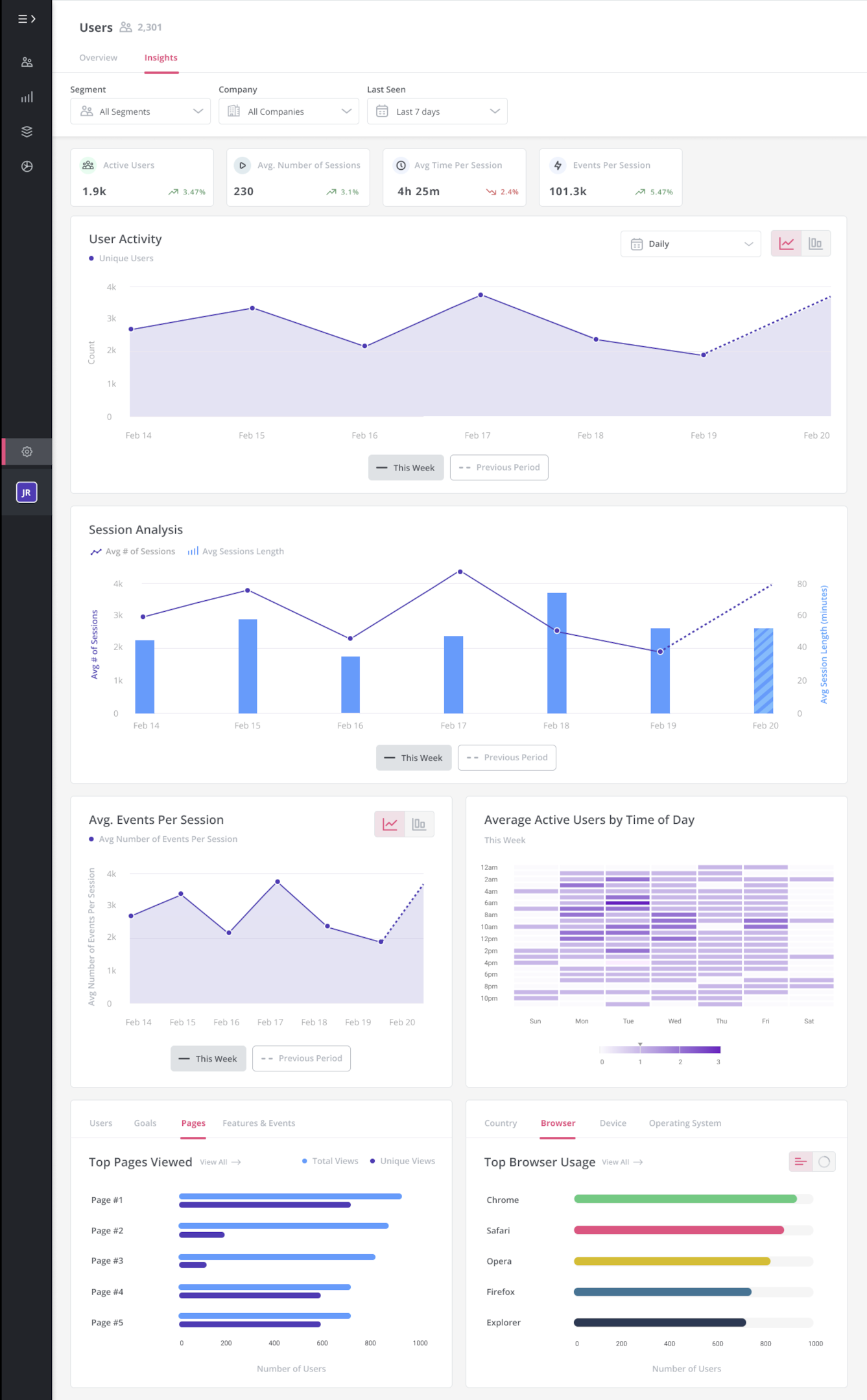
Net promoter score
NPS measures customer loyalty by asking how likely customers are to recommend your products to others. NPS customer feedback is collected with in-app NPS surveys. The logic is that highly engaged users (who pick between 9 & 10) value your product and will be willing to recommend it to others. While dissatisfied customers aka detractors (who pick between zero and six) won’t.
NPS is calculated by subtracting the percentage of least engaged users (detractors) from the percentage of highly engaged users (promoters).
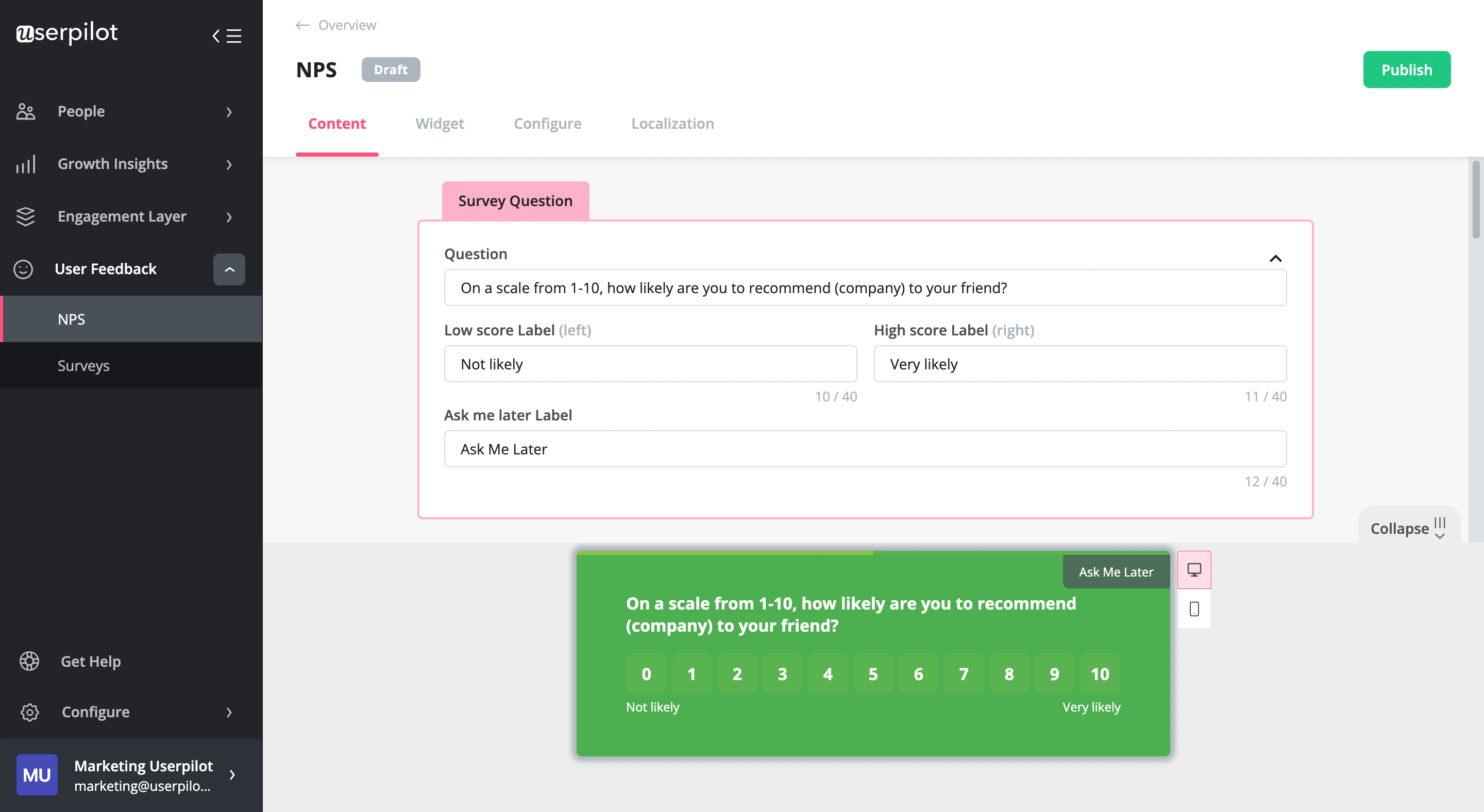
You can track common NPS survey answers with a tool like Userpilot and build automated in-app responses in-app by targeting the right customer segment (segment based on NPS score and NPS answers).
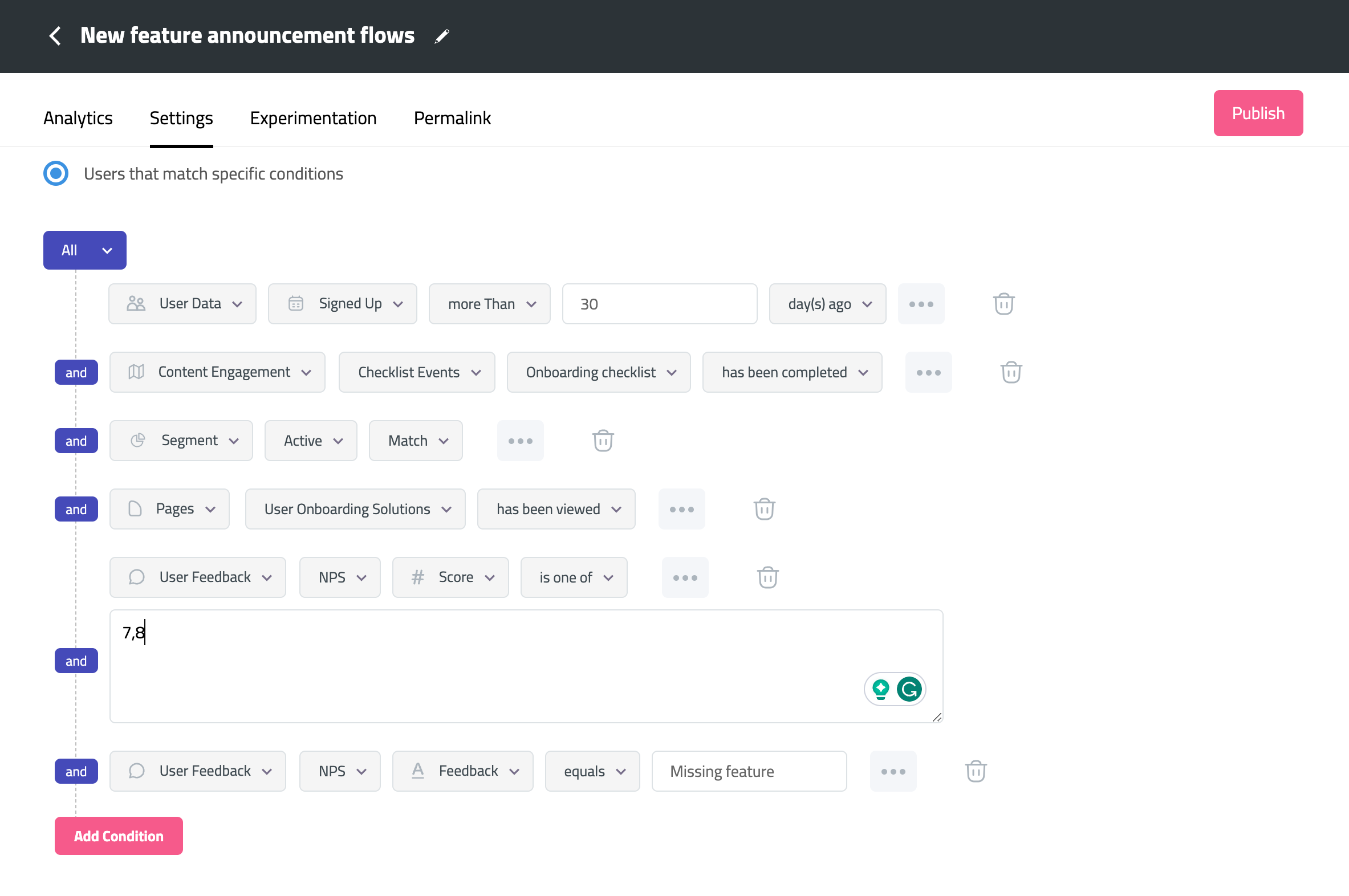
Customer satisfaction score
Customer Satisfaction Score (CSAT) is a valuable customer engagement metric that measures the level of satisfaction customers have with a specific interaction or experience, such as using a feature or receiving customer support. CSAT is often collected through post-interaction surveys, where customers rate their satisfaction on a numerical scale or through simple smiley faces or emojis.
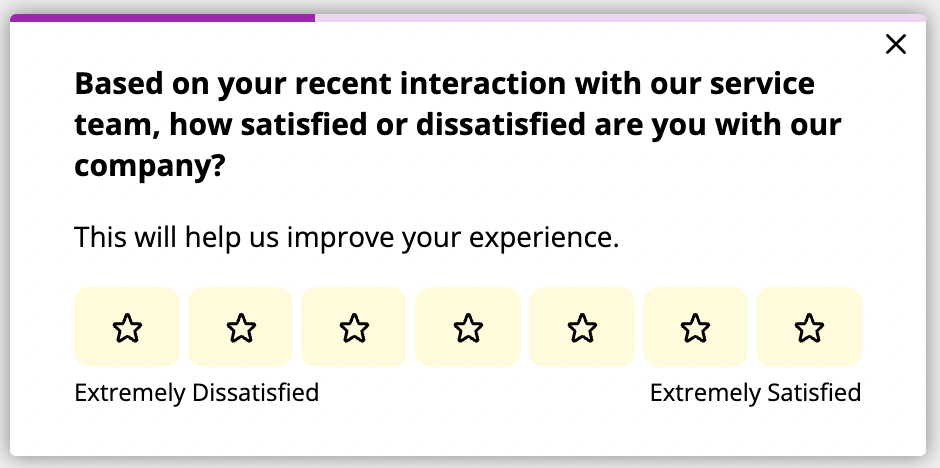
CSAT plays a crucial role in understanding how satisfied customers are with their interactions with the product or the company. Satisfied customers are more likely to have positive experiences, which can contribute to increased engagement and customer loyalty over the customer’s lifetime.
Customer effort score
Customer Effort Score (CES) assesses the level of effort customers need to put forth to resolve issues, complete tasks, or achieve desired outcomes.
In the context of customer engagement, CES is a valuable indicator of how effectively your product is meeting customer needs and expectations. Minimizing customer effort contributes to a positive customer experience, which in turn can lead to higher satisfaction, increased loyalty, and more loyal customers.
You can easily measure CES using in-app microsurveys that ask users to rate their experience after interacting with your product features or completing a specific task.
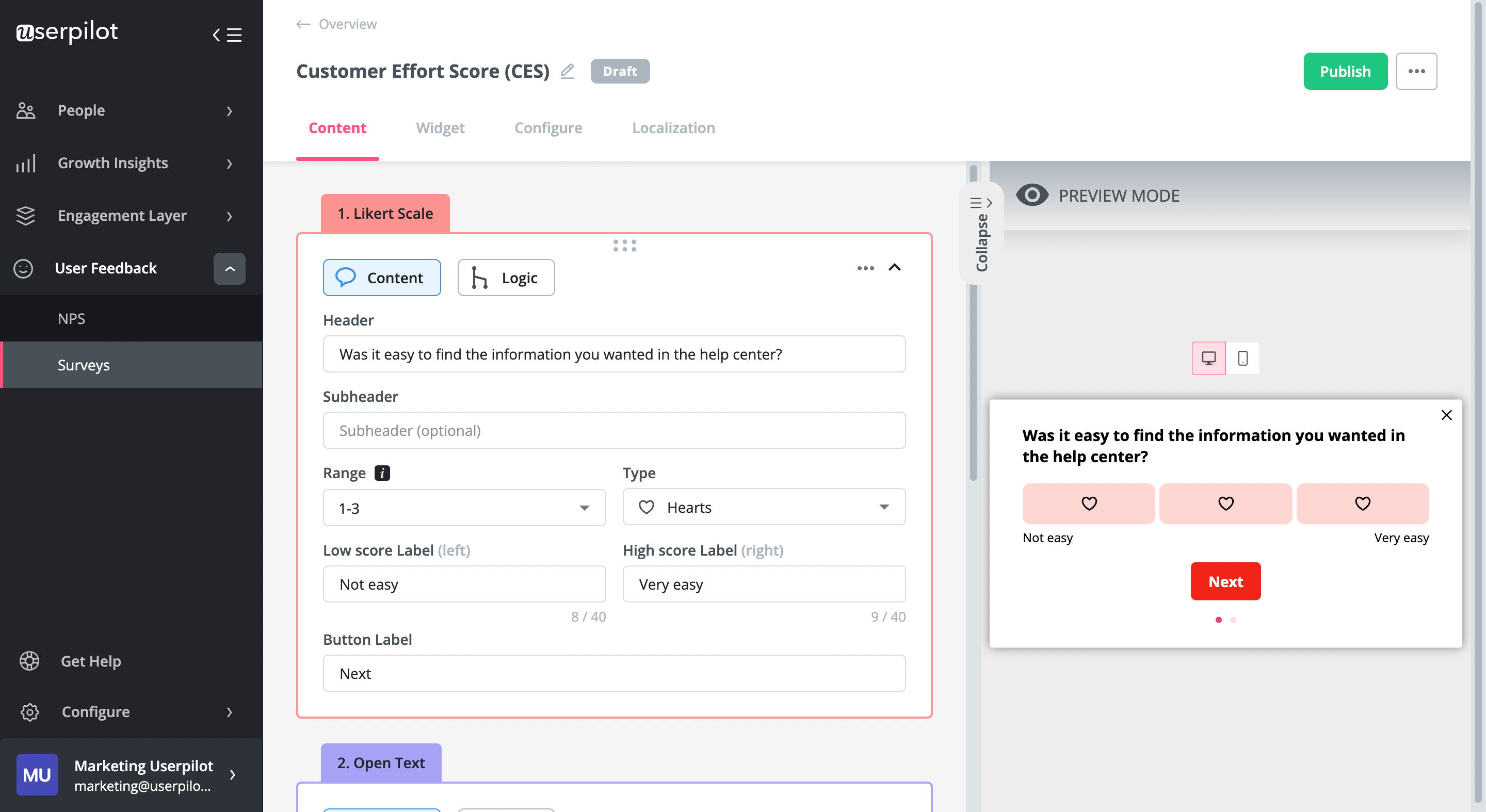
Retention rate
Achieving high customer retention rates is crucial for scaling and fostering customer loyalty. It is the result of effective customer engagement strategies that consistently provide customers with valuable experiences throughout their journey with the product.
To calculate customer retention rate, use the formula:
Customer Retention Rate = (Total number of paying customers at the end of the period / Total number of paying customers at the beginning of the period) * 100%.
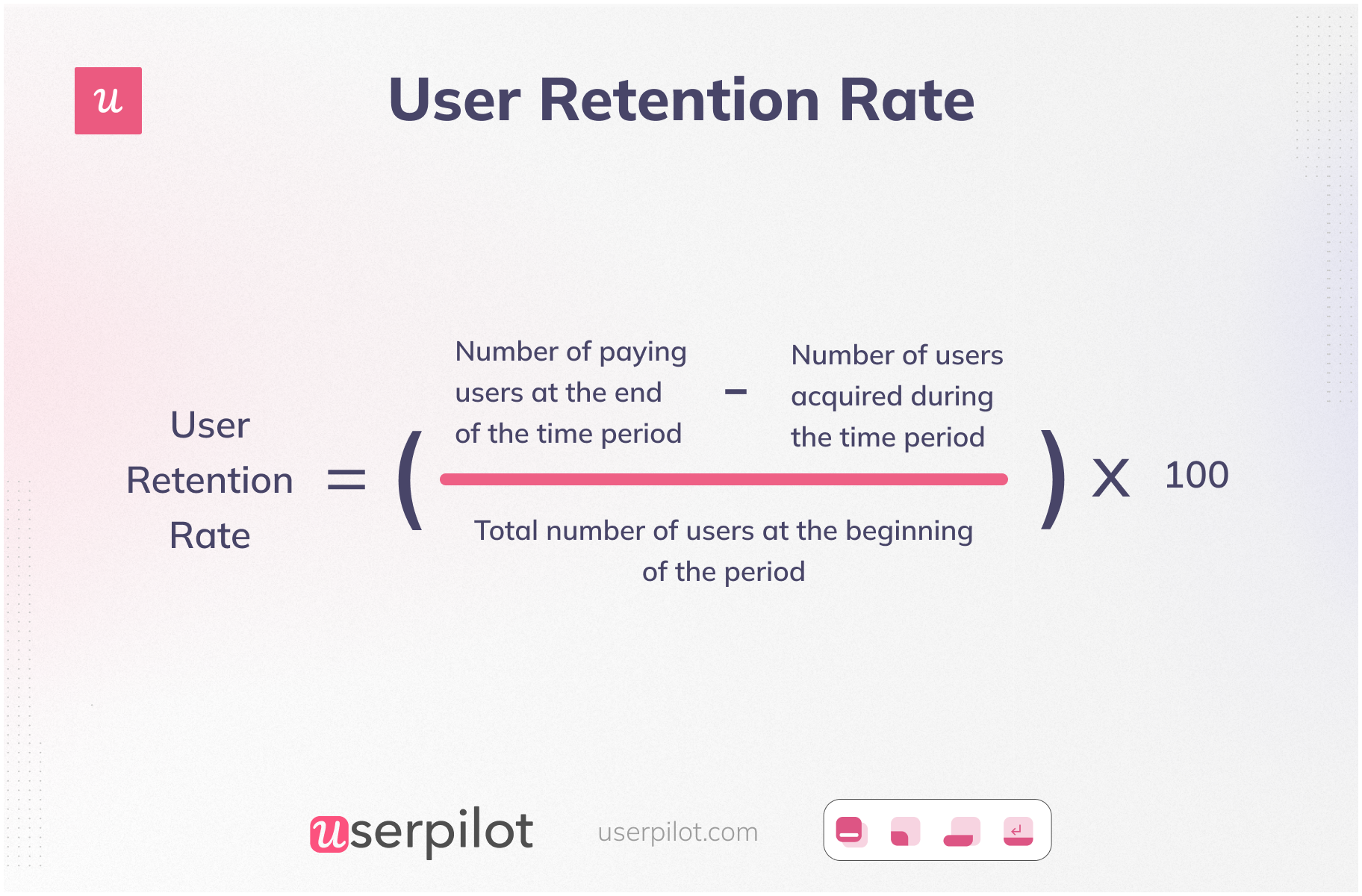
Churn rate
Churn rate solely considers customers who completely abandon the product, excluding those who downgrade their subscriptions. Monitoring this metric is essential as it can indicate potential product faults or issues in delivering value to customers.
High churn rates can signal a lack of customer engagement and a failure to maintain a strong connection with customers. When customers discontinue using the product, it may indicate that they are not finding enough value or relevant experiences to keep them actively engaged.
To measure churn rate, use the formula:
Churn Rate = (Total number of lost users during the period / Total number of paying users at the beginning of the period) * 100%.
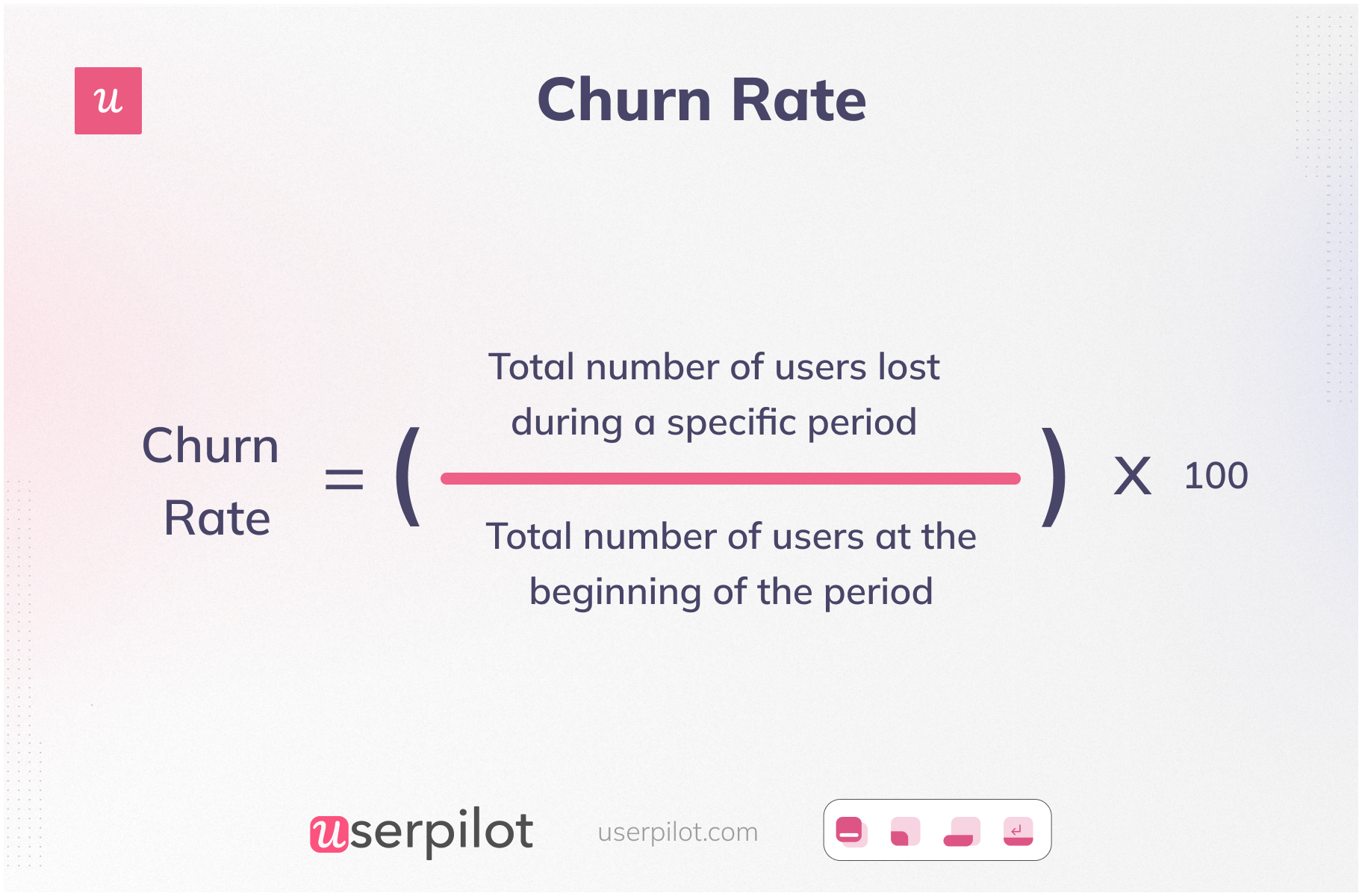
It’s also possible to spot users most likely to churn, segment them and reach out to them offering help just before they make the final move. With a tool like Userpilot, you can create segments based on user behavior, engagement, user identification, and custom events and build in-app marketing strategies meant to drive engagement and improve user experience.
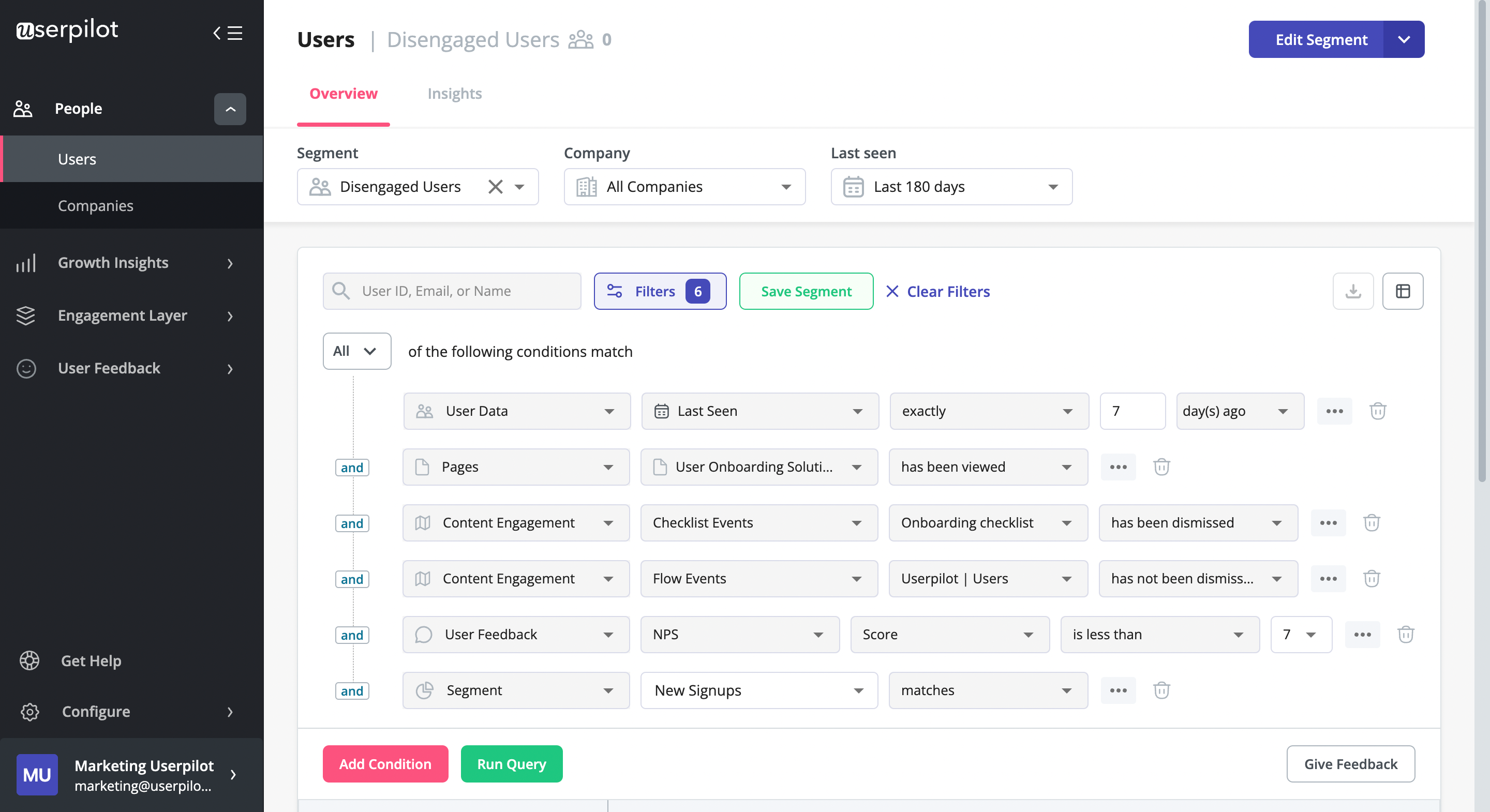
Conclusion
Anyone can acquire users, but retaining them it’s a different story. This is why customer engagement metrics must be a close watch for every SaaS product team. Knowing how many users are not engaged and why will save you from both losses and eventual failure.
By monitoring these twelve metrics above, you’ll be able to optimize your product for increased user engagement and user experience.
Want to build engaging product experiences code-free? Book a demo call with our team and get started!
Try Userpilot and Improve Your Customer Engagement!







